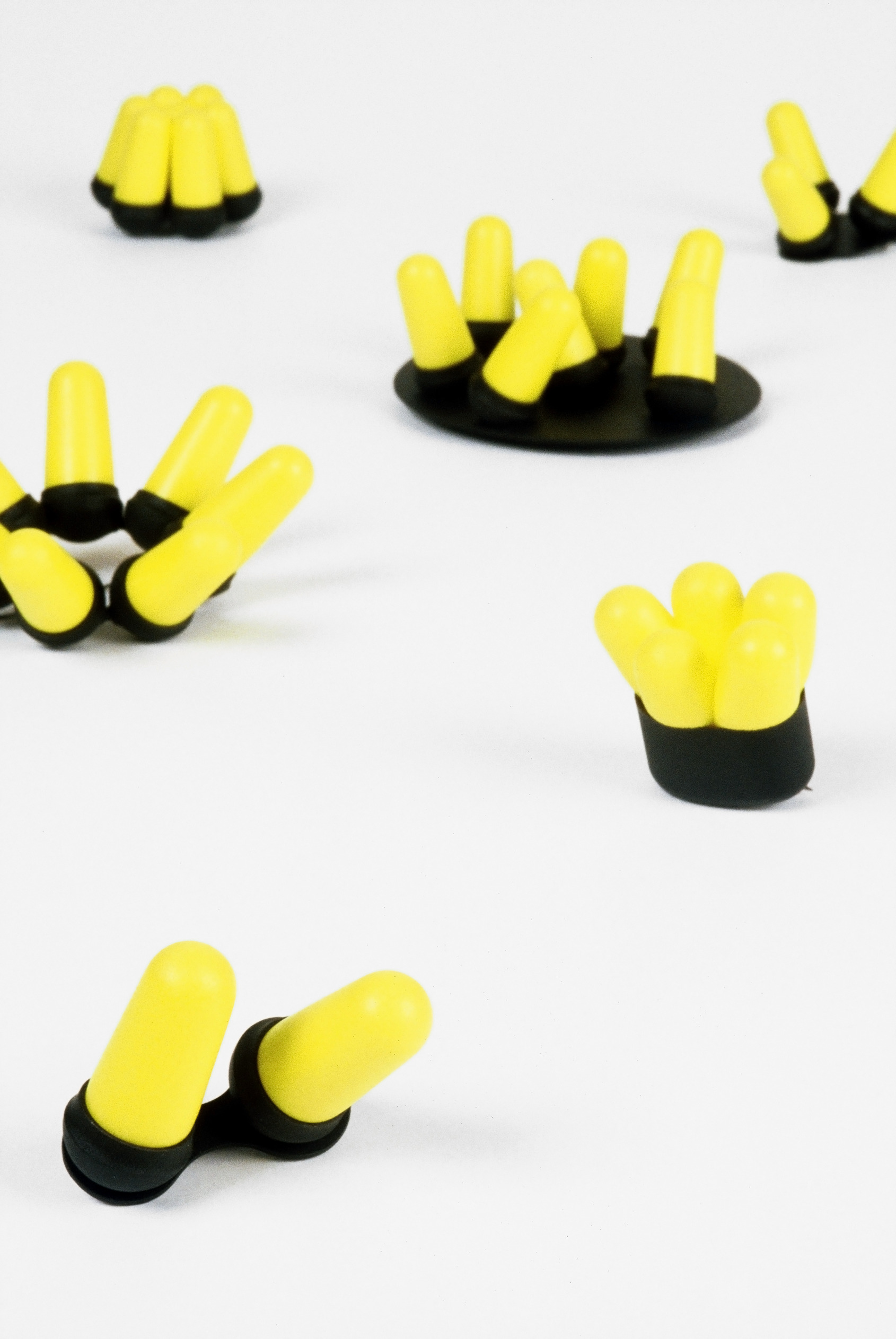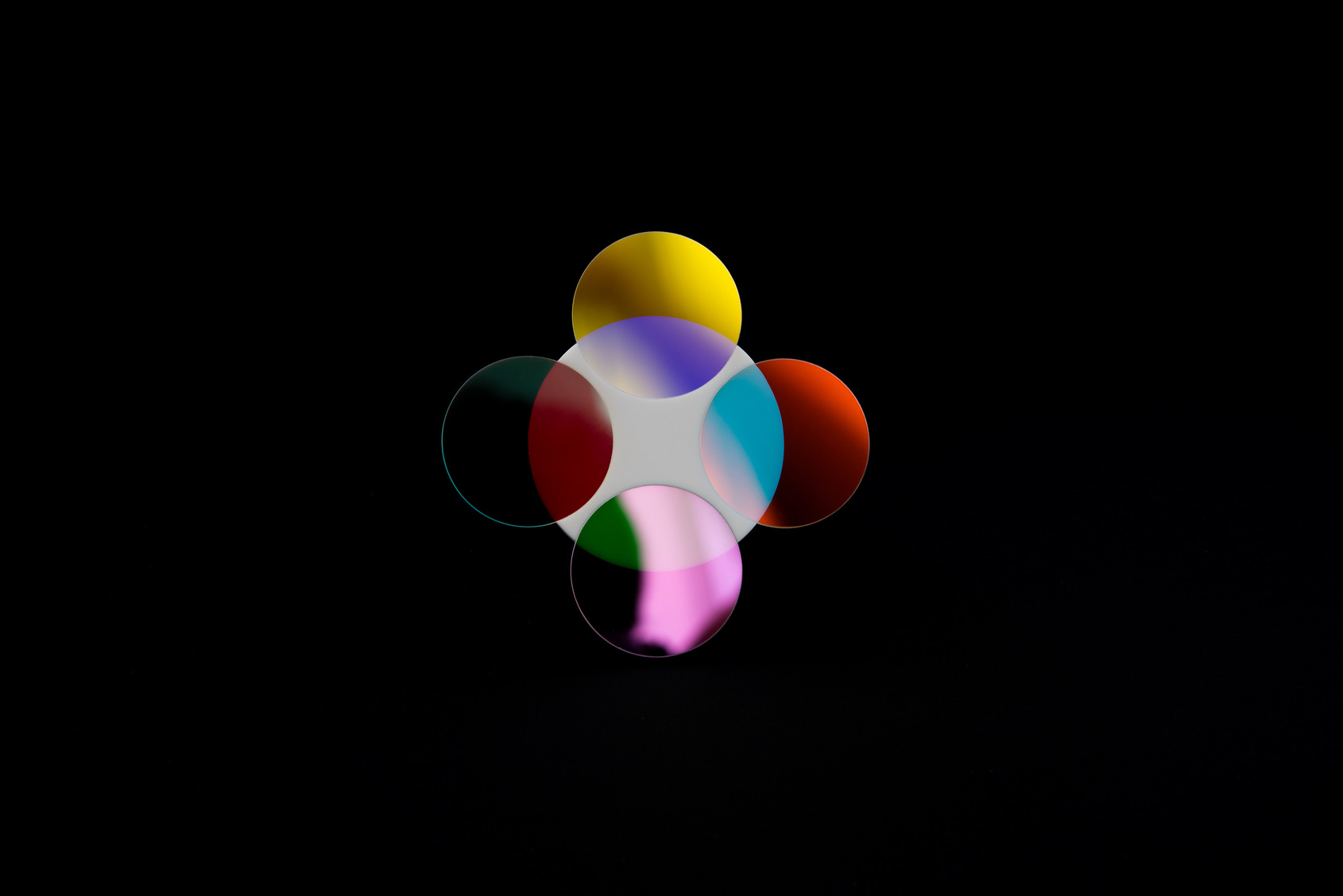
The work of Jiro Kamata evokes a special kind of optimism difficult to find in jewelry. I do not know if it’s by deliberate or subliminal touch, but by recalling a visual past two decades in our rearview mirror, he is able to conjure spectacular echoes of the future. That might sound contradictory, but it isn’t. Look at where we are today: in every aspect of design, high fashion, contemporary aesthetics and the digital frontier, the elements that so uniquely characterized the look and feel of the Y2K era have been freshly rematerialized. Vivid hues, metallic sheens, imagined functionality, amorphous shapes, and streamlined space-age optical fantasies are ever present once again. Jiro was there.
It seems that he had long anticipated this aesthetic return - his 2003 TSUBOMI series is of perfect indication. But the steady use of the lens that defined his Momentopia and Arboresque collections in the late 2000s/early 2010s is even more astute. And what a fitting analogy lenses are; for perspective, longing, imagination. Often manipulated with mistily applied opaque color, restrained composition, and decorative metal flourishes, these pieces have grown with age to an odd level of satisfaction. They would fit perfectly onto any black leather number in the Matrix. They evoke yesterday’s still not fully realized vision of tomorrow.
Introducing dichroic mirror in the mid 2010s – an advanced material with unique reflection and transmission properties at two different wavelengths, typically used in lasers, and also known as beam splitters – was as exciting a shift as it was a natural next step. Jiro created hyper lenses, if you will. Depth defying disks with vivid, contrasting colors were modestly hung on cord (the Bi series). By 2015 the circular elements evolved, becoming superimposed and eclipsed; white corian released the material’s full spectrum to the eye in his Border works, both playful and chic, humble but electric. They could be things of science fiction. They inspire daydream.
The 2016-17 Flare series is no exception, this time pairing white (and black) composite marble with repetitious, ascending and descending 18-karat gold flattened spheres. There is at once relevancy and stunning mystery. They are a nod to the rising and setting of the sun; the mystique of solar phenomenon. They are orderly in the best of ways. And like all the aforementioned pieces, they are also timelessly stylish: any of these bodies of work could have been a perfect fit for the spectacularly futuristic collections of Walter Van Beirendonck in the late 1990s (the most eccentric of the Antwerp Six) - but are also an effortless match for your pick of Maison Margiela’s Artisanal Haute Couture collections from 2017 to right now.
And for that, they are instant contemporary classics, dependent on no one period in time. I choose to compare Jiro’s opus of jewelry wonders to the most adventurous and stunning of high fashion, rather than to high art or academia, because frankly, it’s more fun. That is not to say of course that his work is not art (I will leave that to others to say anyhow, for they will). I just feel such distinctions are non-serving, often building walls around things that only exclude the gaze of newcomers to the field of Contemporary Jewelry. Jiro’s pieces are deserving and capable of hypotheticals far beyond the confines we are used to: a techno utopia, the creation of your digital avatar, as agents of self-actualization, in cyberspace or otherwise.
Jewelry helps you become yourself, whoever you may be. It’s both innate and decisive, it’s soul reflective. The turn to fractured mirror in Jiro’s 2016 Ghost series epitomizes this well, as does his more recent foray into mother of pearl (Shell and Mother, both 2018). Though the latter is a retreat to a more literal jewelry vocabulary, both series are a pixelated jumble of things all too familiar. They are also somehow matchless. They are dependable. They would probably look good on anything.
Jiro Kamata is both a minimalist and a maximalist. It is not a hard conclusion to draw that his work will define how the early 21st century will be remembered within the cult of Contemporary Jewelry - of which he is an elite. But for those on the outside not privy to our subculture, there is a lot here for them too… should they simply dare to look.
Tusbomi, 2003 © Jiro Kamata
Border, 2015-16 © Jiro Kamata

Tusbomi, 2003 © Jiro Kamata

Border, 2015-16 © Jiro Kamata